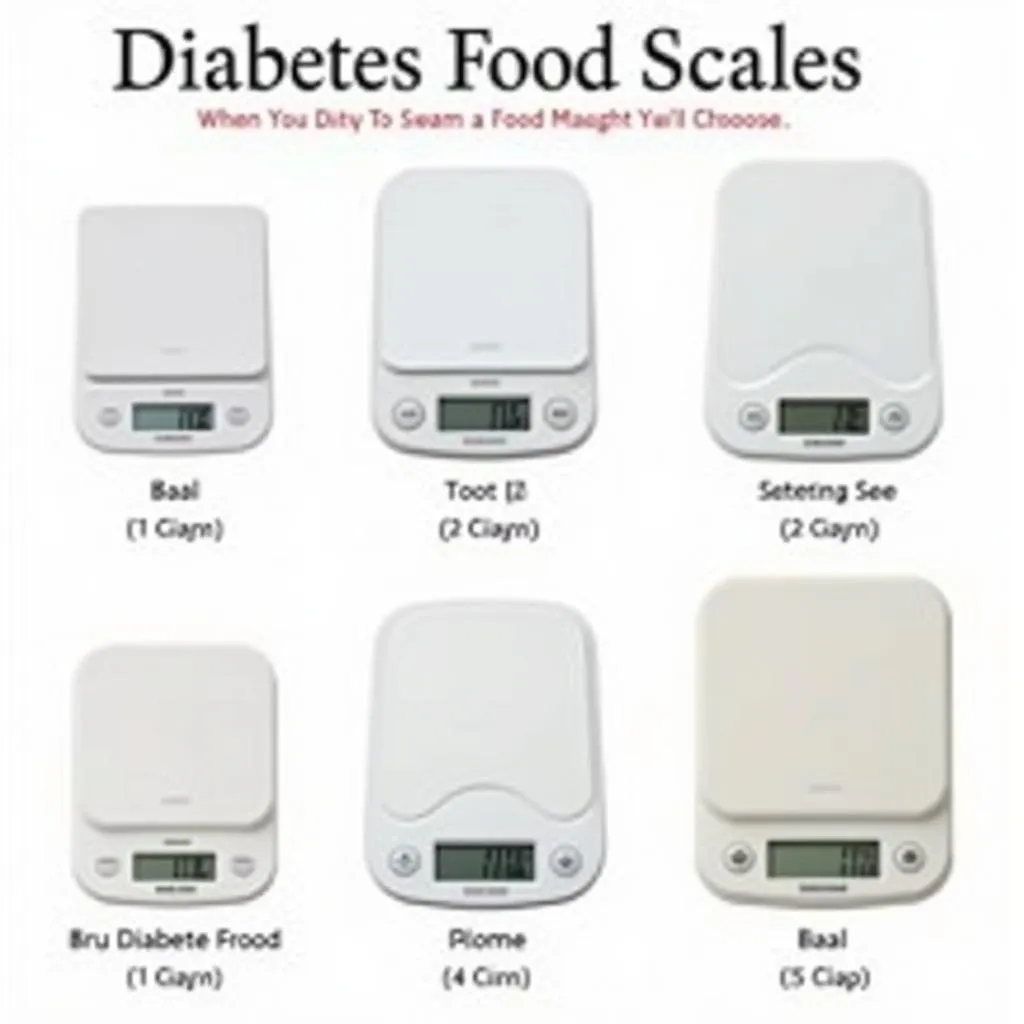Understanding portion sizes is crucial for managing diabetes effectively. While counting carbs and choosing healthy foods are essential, accurately measuring your food intake can take your diabetes management to the next level. This is where a Diabetes Food Scale comes in handy. These specialized scales offer a precise way to measure your food portions, empowering you to track your carbohydrate intake and maintain stable blood sugar levels.
Why Use a Diabetes Food Scale?
You might be wondering, “Can’t I just eyeball my portions?” While eyeballing might seem convenient, it often leads to inaccurate measurements and potential blood sugar fluctuations. A diabetes food scale eliminates the guesswork, providing consistent and reliable measurements every time.
 Diabetes food scale measuring ingredients
Diabetes food scale measuring ingredients
Benefits of Using a Diabetes Food Scale
Here are some key advantages of incorporating a diabetes food scale into your daily routine:
- Accurate Portion Control: Say goodbye to overeating and hello to precise portion sizes, leading to better blood sugar control.
- Simplified Carbohydrate Counting: Easily track your carbohydrate intake for each meal, making it simpler to manage your insulin doses.
- Weight Management: Accurately measuring your food intake can contribute to healthy weight management, a key factor in diabetes control.
- Increased Awareness: Using a food scale raises your awareness of portion sizes, helping you make healthier food choices even when you’re not actively measuring.
- Reduced Risk of Complications: By promoting stable blood sugar levels, a food scale can help reduce the risk of long-term diabetes complications.
Choosing the Right Diabetes Food Scale
Selecting the right food scale is crucial for ensuring accurate measurements and ease of use. Consider these factors when choosing your scale:
- Accuracy: Opt for a scale with high accuracy, preferably measuring in grams or ounces for precise readings.
- Capacity: Choose a scale that can accommodate the weight of your typical food portions, avoiding the need for multiple weigh-ins.
- Features: Some scales offer additional features like tare function (zeroing out the weight of a container) and nutrient tracking capabilities.
- Ease of Use: Look for a scale with a clear display, easy-to-read numbers, and simple controls for effortless operation.
 Different types of diabetes food scales
Different types of diabetes food scales
Tips for Using Your Diabetes Food Scale Effectively
- Weigh Your Food Before Cooking: Weigh ingredients like meat, poultry, and fish before cooking to ensure accurate portion sizes.
- Tare Your Container: Remember to use the tare function to zero out the weight of your plate or container before adding food.
- Read Labels Carefully: Pay attention to serving sizes listed on food labels as these may differ from your desired portion.
- Consult with a Registered Dietitian: For personalized guidance on using a food scale and incorporating it into your meal planning, seek advice from a qualified healthcare professional.
Diabetes Food Scale: A Valuable Tool for Success
A diabetes food scale is more than just a kitchen gadget; it’s a powerful tool that can empower you to take control of your health. By providing accurate measurements and simplifying carbohydrate counting, it helps you manage your blood sugar levels effectively and reduce the risk of complications.
 Person using diabetes food scale with meal plan
Person using diabetes food scale with meal plan
Remember, managing diabetes is a journey that requires consistency and dedication. A diabetes food scale can be your trusted companion along this journey, helping you make informed choices and achieve your health goals. For personalized support and guidance, don’t hesitate to reach out to our team of experts. Contact us at Phone Number: 02437655121, Email: minacones@gmail.com, or visit us at 3PGH+8R9, ĐT70A, thôn Trung, Bắc Từ Liêm, Hà Nội, Việt Nam. We’re here to support you 24/7!